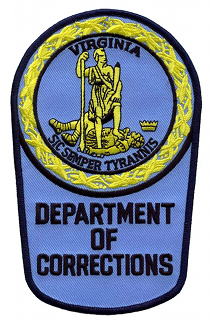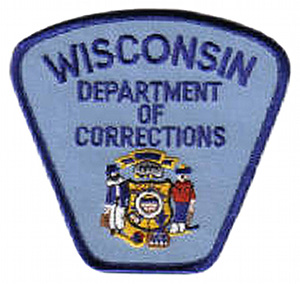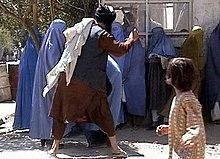
Punishment, commonly, is the imposition of an undesirable or unpleasant outcome upon a group or individual, meted out by an authority—in contexts ranging from child discipline to criminal law—as a response and deterrent to a particular action or behavior that is deemed undesirable or unacceptable. It is, however, possible to distinguish between various different understandings of what punishment is.
Life imprisonment is any sentence of imprisonment for a crime under which convicted criminals are to remain in prison for the rest of their natural lives. Crimes that warrant life imprisonment are usually violent and/or dangerous. Examples of crimes that result in life sentences are murder, torture, terrorism, child abuse resulting in death, rape, espionage, treason, drug trafficking, drug possession, human trafficking, severe fraud and financial crimes, aggravated criminal damage, arson, hate crime, kidnapping, burglary, and robbery, piracy, aircraft hijacking, and genocide.

Penology is a subfield of criminology that deals with the philosophy and practice of various societies in their attempts to repress criminal activities, and satisfy public opinion via an appropriate treatment regime for persons convicted of criminal offences.
Probation in criminal law is a period of supervision over an offender, ordered by the court often in lieu of incarceration.

Prison reform is the attempt to improve conditions inside prisons, improve the effectiveness of a penal system, or implement alternatives to incarceration. It also focuses on ensuring the reinstatement of those whose lives are impacted by crimes.

A probation or parole officer is an official appointed or sworn to investigate, report on, and supervise the conduct of convicted offenders on probation or those released from incarceration to community supervision such as parole. Most probation and parole officers are employed by the government of the jurisdiction in which they operate, although some are employed by private companies that provide contracted services to the government.
Francis Greenway Correctional Complex, formerly John Morony Correctional Complex is an Australian minimum security prison complex for males and females located in Berkshire Park, 5 kilometres (3 mi) south of Windsor in New South Wales, Australia. The complex is operated by Corrective Services NSW, an agency of the Department of Communities and Justice, of the Government of New South Wales.
A reformatory or reformatory school is a youth detention center or an adult correctional facility popular during the late 19th and early 20th centuries in Western countries. In the United Kingdom and United States, they came out of social concerns about cities, poverty, immigration, and gender following industrialization, as well as from a shift in penology to reforming instead of punishing the criminal. They were traditionally single-sex institutions that relied on education, vocational training, and removal from the city. Although their use declined throughout the 20th century, their impact can be seen in practices like the United States' continued implementation of parole and the indeterminate sentence.

The California Department of Corrections and Rehabilitation (CDCR) is the penal law enforcement agency of the government of California responsible for the operation of the California state prison and parole systems. Its headquarters are in Sacramento.

The penal system of Japan is part of the criminal justice system of Japan. It is intended to resocialize, reform, rehabilitate and punish offenders. The penal system is operated by the Correction Bureau of the Ministry of Justice.
Elmira Correctional Facility, also known as "The Hill", is a maximum security state prison located in Chemung County, in the City of Elmira in the US state of New York. It is operated by the New York State Department of Corrections and Community Supervision. A supermax prison, Southport Correctional Facility, is located 2 miles (3.2 km) away from Elmira.

The Virginia Department of Corrections (VADOC) is the government agency responsible for community corrections and operating prisons and correctional facilities in the Commonwealth of Virginia in the United States. The agency is fully accredited by the American Correctional Association and is one of the oldest functioning correctional agencies in the United States. Its headquarters is located in the state capital of Richmond.

Incapacitation in the context of criminal sentencing philosophy is one of the functions of punishment. It involves capital punishment, sending an offender to prison, or possibly restricting their freedom in the community, to protect society and prevent that person from committing further crimes. Incarceration, as the primary mechanism for incapacitation, is also used as to try to deter future offending.
Corrective Services New South Wales (CSNSW) is a division of the Department of Communities and Justice of the Government of New South Wales, Australia. CSNSW is responsible for the state's prisons and a range of programs for managing offenders in the community. The state has 36 prisons, 33 run by CSNSW and three privately operated. The agency traces its origins back to 1788, when New South Wales was founded as a penal colony.

The Wisconsin Department of Corrections (WIDOC) is an administrative department in the executive branch of the state of Wisconsin responsible for corrections in Wisconsin, including state prisons and community supervision. The secretary is a cabinet member appointed by the governor of Wisconsin and confirmed by the Wisconsin Senate.

A prison, also known as a jail, gaol, penitentiary, detention center, correction center, correctional facility, or remand center, is a facility where people are confined against their will and denied a variety of freedoms under the authority of the state, generally as punishment for various crimes. Authorities most commonly use prisons within a criminal-justice system: people charged with crimes may be imprisoned until their trial; those who have pled or been found guilty of crimes at trial may be sentenced to a specified period of imprisonment.

The New York State Division of Parole was an agency of the government of New York within the New York State Correctional Services from 1930 to 2011. § 259. "1. There shall be in the executive department of state government a state division of parole" responsible for parole, the supervised release of a prisoner before the completion of his/her sentence. In 2011, the agency merged with the Department of Correctional Services to form the New York State Department of Corrections and Community Supervision.

The criminal justice system of the Netherlands is the system of practices and institutions of the Netherlands directed at upholding social control, deterring and mitigating crime, and sanctioning those who violate laws with criminal penalties and rehabilitation efforts. The Netherlands' criminal code is based on the Napoleonic Code, imposed during the time of the French Empire. The Dutch largely kept the Napoleonic Code after their independence, but tempered it with a significantly more rehabilitative penological focus.
A rehabilitation policy within criminology, is one intending to reform criminals rather than punish them and/or segregate them from the greater community.

Norway's criminal justice system focuses on the principles of restorative justice and the rehabilitation of prisoners. Correctional facilities in Norway focus on maintaining custody of the offender and attempting to make them functioning members of society. Norway's prison system is renowned as one of the most effective and humane in the world.













